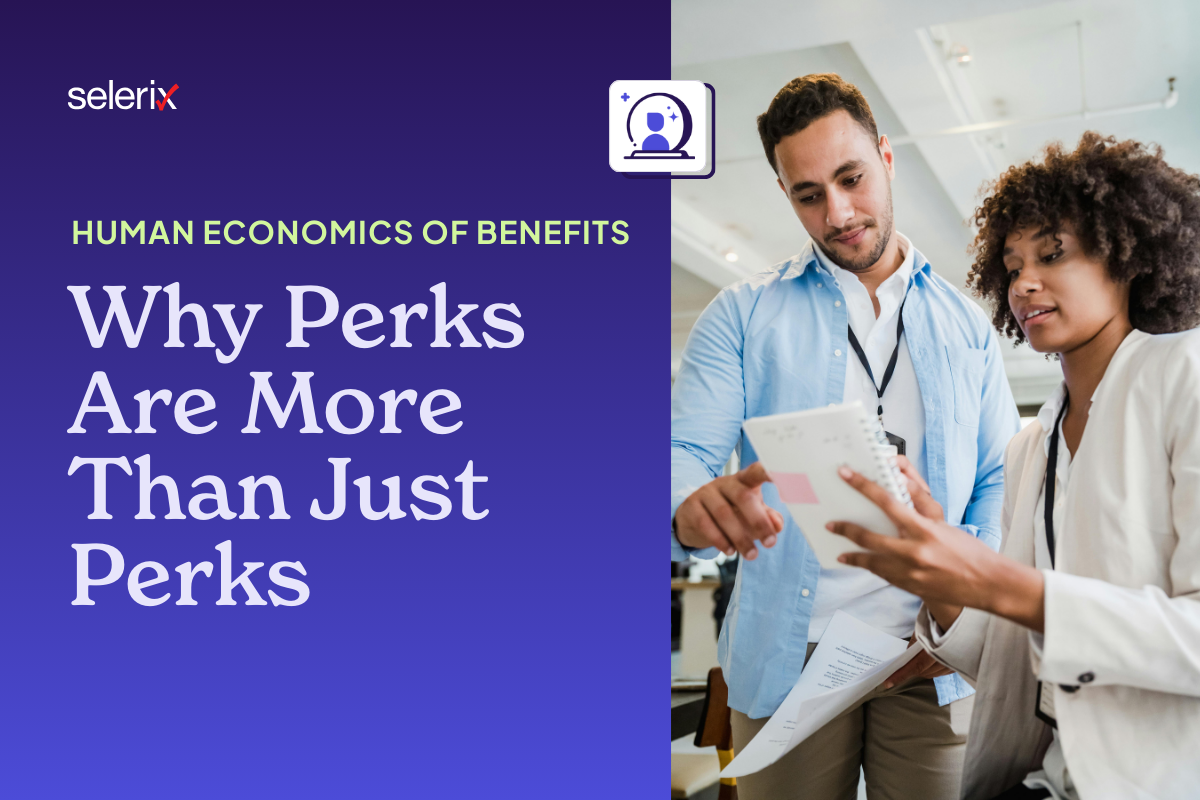The Human Economics of Benefits: Why Perks Are More Than Just Perks

Imagine buying a state-of-the-art treadmill but never plugging it in. That’s what benefits can feel like when the process around them doesn’t work. Employers may invest in generous perks, but if employees don’t understand, trust, or use them, the ROI is about as good as that treadmill collecting dust in the corner.
At Selerix, we call this the human economics of benefits. It’s the recognition that behind every checkbox on an enrollment form is a real decision—one that touches someone’s health, their paycheck, even their family’s future. Benefits are more than perks. They’re a currency of trust, loyalty, and well-being. And when they miss the mark, the costs are real.
The Problem Isn’t the Package—it’s the Process
Our research shows most organizations are not stingy. They’re offering strong packages: health, retirement, mental health, wellness, and more. Yet, only 27% of employees say they fully understand their benefits and one in three report regret after enrollment.
That regret doesn’t just disappear. It leads to:
- Delayed care (39% put off or skipped treatment because they weren’t sure if it was covered).
- Lost productivity (21% missed work to handle a benefits issue).
- Stress that lingers at work (1 in 10 say benefits confusion distracts them daily).
Think of it this way: benefits that confuse are like offering employees a map written in code. The destination might be great, but if they can’t read it, they’ll never get there.
Why Personalization Is the Force Multiplier
Not all benefits experiences are created equal. The difference isn’t what’s offered, but how personal the journey feels. Employees who described their enrollment as “extremely personalized” were three times more likely to be very satisfied.
That’s where HR leaders and brokers have leverage:
- Clarity above all. Break down coverage and costs in plain language, with examples that feel real.
- Tailored communication. A Millennial juggling a family budget needs different nudges than a Gen Z new hire facing their first insurance form.
- Consistent support. Employees don’t want an annual firehose of information. They want reminders, check-ins, and year-round education.
This is where technology helps. Platforms that automate personalized messages, integrate decision-support tools, and deliver information through the right channels make benefits not just available, but actionable. For example, in our post on engaging employees we explored how timely nudges and education improve confidence and usage.
It’s the difference between serving a buffet and having a guide help you fill your plate with what actually nourishes you.
The Business Case: Benefits That Truly Benefit
When benefits feel personal and clear, the payoff is striking. Employees who are satisfied with their benefits are five times more likely to stay and 3.5 times more likely to trust their employer.
That makes benefits a business lever, not a perk. As we’ve highlighted in our ROI playbook, well-managed benefits drive retention, trust, and performance—especially in uncertain times.
Turning Insight into Action
Our latest survey data makes the gaps clear. The good news? Every frustration—whether it’s regret, confusion, or compliance blind spots—is also fixable. Solutions like smarter communication, embedded decision-support, and year-round benefits education already exist.
For HR teams, that means less scrambling during open enrollment. For brokers, it means stronger strategies to help clients reduce regret and boost confidence.

Dig into the full findings and see where employees say benefits are broken—and how to fix them.
Download the Selerix Employee Benefits Survey Report

